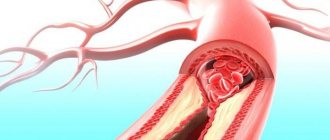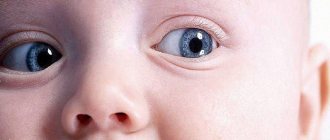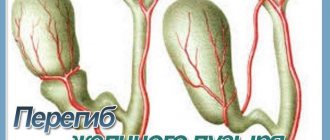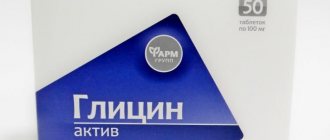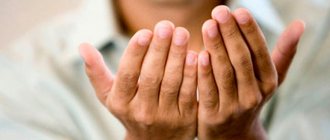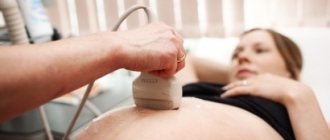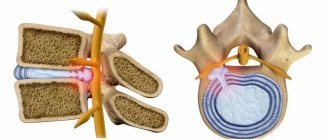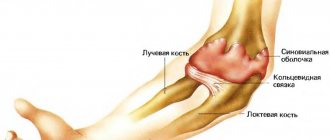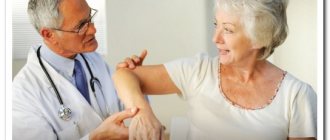Etiology of the disease
Heel spur (plantar or plantar fasciitis) is an inflammation of the plantar aponeurosis (tendon plate). Inflammation is manifested by the formation of bone growths that look like a spike or wedge.
The main causes of pathology:
- Flat feet;
- Diabetes;
- Impaired metabolism;
- Excess weight;
- Foot injuries;
- Age-related changes.
These factors contribute to an increase in the load on the foot. As a result of excessive load, tendon tension occurs, microtraumas form, and an inflammatory process occurs. The disease is most often observed in athletes, women and the elderly.
Conditions and causes of heel spurs
The main causes of heel spurs are associated with impaired neuromuscular shock absorption. Neuromuscular cushioning ensures coordinated interaction between the muscles of the back and lower extremities, reducing the impact load on the foot when walking and running. The main shock-absorbing instruments are the foot and the anterior calf muscle, as well as the spine. Coordination of conjugate muscle movements is carried out at the level of the spinal cord.
Neuromuscular damping disorder
Causes of impaired neuromuscular shock absorption:
- Spinal diseases - spinal osteochondrosis, disc herniations lead to tissue swelling, impaired blood supply and pinching of the spinal cord and nerve roots. As a result, the passage of nerve impulses along the nerve pathways is slowed down or disrupted, which leads to a mismatch in muscle function and a decrease in neuromuscular amortization.
- Kidney problems , which lead to disruption of the electrolyte and water-salt balance of the blood, and therefore to a decrease in the supply of resources to muscle tissue.
- Muscle weakness . Causes of muscle weakness:
- Sedentary lifestyle (hypodynamia). A “sedentary” lifestyle leads to untrained muscles and their “slagging” due to an insufficient level of tissue microvibration.
- A lack of resources for muscle work, which accordingly arises due to insufficient kidney function.
Weak muscles do not provide adequate shock absorption during walking and running, resulting in damage to the spine. This completes a circle that is sometimes difficult to break.
In healthy, athletic people, thanks to the well-coordinated joint work of the back muscles with the muscles of the legs and feet, the body reduces the impact load to a safe level, protects the joints, fascia and spine.
In elderly and untrained people, weakening of the muscles of the legs and back occurs, a decrease in the speed of nerve signals along the nerves and spinal cord (as a result of hernia, osteochondrosis). This is the main cause of neuromuscular depreciation disorder, disruption of the interconnected work of various muscle groups. As a result, frequent microtraumas of the heel bone and plantar fascia occur and heel spurs appear.
Deficiency of microvibration of muscle cells
Microvibration is a vital resource of the body, necessary for the normal functioning of organs and tissues. A sufficient level of microvibration is required by the human body for sufficient blood supply and nutrition to muscles, joints, fascia, synthesis of organic substances, removal of decay products and toxins, and maintenance of immunity.
The fact is that the cells of our body never rest; every second many biochemical reactions take place in them, necessary for the normal functioning of the cell, providing its nutrition and removal of waste substances. The speed of these processes directly depends on the level of microvibration of the surrounding intercellular space. All cells and substances do not have their own means of movement, so they need to be “shaken” using biological microvibration so that they can move and contact each other.
With various diseases, in older people, in people who do not engage in active physical labor, or with a “sedentary” lifestyle, the level of microvibration decreases, since there are not enough muscle cells and they work weakly. In all tissues, including bones and fascia, metabolic processes slow down, salts and waste accumulate, microcirculation and lymph flow are disrupted with the development of edema and inflammation of tissues, cell destruction and death occur, which is a trigger factor for the development of the disease.
Additional factors that contribute to the development of heel spurs:
unbalanced nutrition, excess body weight, leading to increased stress on the ligaments of the foot, damage to the plantar fascia.- wearing high-heeled shoes, improperly selected tight shoes.
- hereditary predisposition. The risk of the disease is higher in those families where connective tissue diseases occur.
- inflammatory changes in joints (arthritis). In infectious diseases (gonorrhea, chlamydia), rheumatological diseases (lupus erythematosus), inflammatory damage to the joints initially occurs, and then degenerative (destructive) changes in the joints and fascia occur.
- disorders of metabolic processes and blood circulation in the feet, which can be caused by gout (salt deposition occurs), atherosclerosis, and diabetes.
- abnormal gait with overstrain of the Achilles tendon, involuntary pronation (inward rotation) of the back of the foot when walking.
The role of nutrition in the development of the disease
Excess weight creates additional stress (mechanical pressure) on the bones and joints of the foot, leading to injury to the plantar fascia and heel bone, the development of inflammatory changes in them and cell death, which is what causes a heel spur. Losing body weight and normalizing metabolism is an important factor in preventing the development and treatment of plantar fasciitis.
According to the latest scientific data, a protein-free diet (fasting) has a powerful healing effect on the body, increases the overall resources of the body, stimulates the immune system, and normalizes body weight. Temporary refusal of foods high in protein (meat, fish, seafood, cheese, nuts, poultry) or a therapeutic protein-free diet helps to dispose of excess protein in the lymphatic system, which is formed when cells die during the disease. This diet promotes self-healing and healing of the body.
Also in the program of the famous TV presenter, Doctor of Medical Sciences E. Malysheva, some of the causes and symptoms of plantar fasciitis are discussed:
Clinical picture of the pathology
A heel spur is characterized by the main symptom - sharp pain in the area of inflammation, which manifests itself mainly in the morning and evening. Swelling of the legs and a feeling of heaviness are possible. These symptoms force you to immediately seek help from a doctor. If the diagnosis is confirmed, it is necessary to immediately begin treatment at home, which will be prescribed by a doctor.
Heel pain
About heel spur
Spurs on the heels appear from a long-term inflammatory process, which provokes the formation of a calcified outgrowth. This pathology develops gradually.
The process of disease development, causes and risk factors
When the load is unevenly distributed, the heel bone begins to undergo deformation in the area of tendon attachment. As the inflammatory process intensifies, the tissue grows more and more, provoking pain symptoms.
a spur on the heel is formed during the deformation of the tendon in the area of attachment
The causes of the pathology are:
- flat feet;
- foot injuries;
- autoimmune joint diseases;
- arthritis;
- gout;
- ligament damage;
- atherosclerosis;
- diabetes;
- chlamydia.
Risk factors:
- active sports;
- rachiocampsis;
- work that requires constant standing.
Most often, heel fasciitis occurs in women over 40 years of age, as well as in people who are overweight.
Symptoms of the disease
The main symptom of this disease is pain that is felt in the center of the heel. There may be tingling, burning and numbness. Discomfort increases after physical activity. During the acute period, you may feel as if a needle has been stuck into your foot; sometimes the pain becomes unbearable. In advanced cases, you can feel a small lump in the heel area.
the disease manifests itself as pain in the center of the heel, which intensifies after physical activity
Clinical manifestations of pathology and diagnosis
The diagnosis is made after an X-ray examination of the foot. If there is a spur, the image shows a deformed bone and the presence of a characteristic growth. An additional research method in this case is computed tomography, which allows you to obtain a more detailed picture. During palpation of the affected leg, pain may intensify. Less commonly, a mild cramp occurs.
Treatment methods at home
After diagnosis, the doctor will prescribe treatment, which necessarily has an integrated approach. It can be carried out through medications, physical therapy, a set of physiotherapy procedures, special injections into the heel (blockade), medical plaster, surgical intervention (excision surgery). Therapy is prescribed both inpatient and at home. Let's consider below how to treat the disease yourself.
Drug therapy
The main direction of drug therapy is to relieve severe pain, relieve inflammation, and stop the growth of bone tissue. They are used topically, in the form of gels, ointments, creams, and solutions for compresses.
Treatment for heel spurs at home involves the use of non-steroidal anti-inflammatory drugs (NSAIDs). These drugs are not able to eliminate the cause, but easily relieve the patient from pain, swelling and signs of inflammation. These include Movalis, Voltaren, Diclofenac, Ketoprofen, Butadione. It is recommended to warm the foot before applying the medications.
Medications
Ancillary medications that can be used at home include Dimexide. To relieve pain, a gauze compress with Dimexide must be applied to the inflamed area. First dilute it with water in a ratio of 1:5, apply 20 minutes after NSAIDs. The procedures are carried out three times a day, by applying a compress for 2 hours, for two weeks. Patients note that on the fifth day of using Dimexide, the pain becomes much weaker.
Very popular are patches that are impregnated with plant extracts and can have an analgesic and anti-inflammatory effect. The patch is applied to the heel for 24 hours. It is recommended to be treated for 2-3 weeks.
Hardware therapy for heel spurs
Let's look at how to cure heel spurs at home using special devices. Thanks to the developments of medical professors, physiotherapy is available not only in a physiotherapy room, but also at home. The most effective of them are presented below.
- "Reton"
Low frequency device AUTn-01, the operating principle of which is based on the use of ultrasound. An additional mode is phonophoresis (a method of physiotherapy, which is based on the administration of a drug using ultrasonic vibrations).
The action of the device is aimed at increasing blood flow, relieving vascular spasms, relieving pain, and relieving inflammation.
- "Vitafon"
Treatment with Vitafon involves phonation (deep micromassage at the cellular level) with vibroacoustic waves to relieve swelling and inflammation, regenerate ligaments, restore blood supply and nervous regulation. The device has a successful effect on pain syndrome. After two weeks of daily sessions, the pain goes away completely.
It is most effective in combination with ultrasound, drug therapy, and wearing orthopedic insoles.
Devices for the treatment of heel spurs
- "Almag"
Treatment of heel spurs with Almag is based on the use of magnetic pulses. The waves penetrate 8 cm deep, thereby affecting all layers of the skin, reaching muscles and bone tissue.
The device has a positive effect on blood circulation in tissues, helps relieve inflammation and restore cells.
Each device has a wide spectrum of action and some contraindications. Any treatment should only take place after consultation with a doctor.
Massage for heel spurs
According to human anatomy, the foot has many reflexogenic points. Knowing how to influence them correctly, you can cope with many problems and remove unpleasant sensations. Heel spurs can be treated at home by massaging the foot.
This procedure is carried out to improve nutrition of the muscles of the ankle ligaments, increase blood flow, increase lymphatic drainage, and relieve swelling. After completing the massage course, the physiological structure of the fascia and the kinematics of the foot are restored.
Before the massage, it is recommended to pre-steam your feet. The safest and most effective is a salt bath, which will help relax your muscles. To prepare a salt bath, you need to take 50 grams (3-4 tablespoons) of salt, pour a liter of boiling water, pour into a basin and lower your feet. Soar your feet for half an hour.
Self-massage of the foot is carried out using oil (coconut, Vaseline, olive) heated to body temperature. The massage is carried out every day before bed, for 10 days.
Complex of massage movements:
- Stroking with intense pressure from the heel to the toes.
- Use the pad of your thumb to massage your big toe in a circular motion.
- Grasp the foot with both hands, using your thumbs to press on different points of the foot.
Foot massage technique
You can also use many different means and devices to massage your feet. The most popular of them are discussed below.
- Salt
This massage will help relieve pain, normalize metabolic processes in tissues, and improve skin condition.
For the procedure, 1 kg of salt needs to be heated in a frying pan, poured onto a flat surface and walked on it for 20 minutes. The number of sessions is not limited until the desired result is achieved.
- Massager
Manufacturers of medical equipment have taken care of patients who suffer from heel spurs and have released several versions of massagers. The use of special devices increases blood circulation, relieves swelling, relaxes muscles, and affects active biological points of the foot.
Foot massagers
- Washboard
One of the ways to quickly get rid of heel spurs at home is washboard exercises. To do this, you need to rub your heels intensively on the washboard. Carry out the procedure for 15 minutes in the morning and evening, until the growth disappears completely.
- Log
A massage with an aspen log at home is carried out as follows: steam your legs, hit your spurs with a log, starting with 15 blows. Gradually reaching 100 strikes. Tapping improves blood circulation and stimulates healing. This foot massage will heal the entire body. Sessions are carried out until complete recovery.
- Potato
Another option for dealing with thorns at home is to use potatoes. Boil small potatoes until tender, add plenty of salt. Place the salted potatoes in a bowl and mash them with your feet until they cool completely. After this, apply iodine mesh to the heel and put on a warm sock. The course of therapy is a week.
- Kuznetsov applicator
There are many types of massage, but acupuncture occupies a special place. Not everyone has the opportunity to attend such a massage in a professional office, which is why the Kuznetsov applicator was created. It is a mat with many plastic needles, which is very easy to use at home.
Kuznetsov applicator
Kuznetsov's applicator for heel spurs has excellent effectiveness. Multiple small injections with needles relax muscles and improve blood circulation. It is recommended to use at times of exacerbation of pain syndrome (morning and evening). It is enough to just stand or walk until a feeling of warmth appears in your feet. This method is a quick way to relieve pain.
In the treatment of spurs, an integrated approach is very important - the simultaneous use of medications, exercises, massage, nutritional adjustments, wearing special insoles, and compliance with preventive measures. Only complex therapy will help get rid of the problem.
Gymnastics and exercises
The effectiveness of treating heel spurs with the help of gymnastics is based on the consistency and stability of the exercises. Gymnastics is aimed at increasing the elasticity of connective tissue. It is recommended to perform it every evening in a calm state. At home, exercises are used to:
- Foot stretching (pain relief);
- Lateral exercises (muscle strengthening);
- Arch rotation (improving foot mobility).
A useful exercise is daily walks in the fresh air, which are accompanied by walking with bare feet on an uneven surface (over rocks).
While the patient is climbing the steps, it is important to focus on the toes, without leaning on the entire foot - this can relieve unpleasant symptoms.
Traditional medicine against spurs on the heel
Recipes of traditional (alternative) medicine have a wide range of applications, their effectiveness has been proven for centuries. Every person who has encountered such a problem wonders how to treat heel spurs at home using folk remedies. Traditional methods and recipes must necessarily serve as a complement to drug treatment and other types of therapy, but not exist independently.
Compresses for heel spurs
In order to relieve the symptoms of heel spurs at home, various compresses are widely used. This method of therapy reduces pain, relieves inflammation and promotes a speedy recovery.
- Potato
Thoroughly washed potatoes with skins are grated on a fine grater and applied to the heel for a day. For convenience, the pulp is placed on gauze, attached to the heel and wrapped in a bag. After 24 hours, change the compress to a fresh one for a week.
- Black radish
At night, apply finely grated black radish along with the peel to the sore spot. Just as in the first case, you need to wrap it in cellophane and put on a warm sock. In the morning, rinse with warm water. Repeat the procedure for five nights.
Ingredients for folk recipes for heel spurs
- Iodine+analgin
A medicinal mixture will help quickly relieve pain. It is necessary to crush one tablet of analgin and add 2-3 drops of iodine, mix well. Place on the heel, wrapping it in polyethylene for half an hour. After removing the compress, rinse your foot thoroughly. Repeat if necessary, but no more than 3 times a day.
- Burdock
Place a burdock leaf under the inflamed area, put on a sock and walk like this all day. When the leaf darkens, it should be replaced with a fresh one. This method has no restrictions.
- Bishofite
This natural remedy contains a huge amount of minerals and nutrients. Warm the foot well, moisten a cotton cloth in Bischofite gel, apply it to the sore spot, wrap it in polyethylene and put on a warm sock. The compress is done before bedtime. In the morning, rinse the heel well with warm water. Sessions are held every other day for two weeks.
- Onion garlic
- Grind 4-5 cloves of garlic using a garlic press, apply to the heel, wrap with a bandage for 2-3 hours (if there is no burning sensation). If discomfort is felt, it is recommended to reduce the time.
- Cut the onion into halves, add 1-2 drops of birch tar. Apply to the foot and wrap with a bandage for 2 hours.
- Medical bile
The basis of the drug is natural bile of cattle or pigs. Has analgesic and anti-inflammatory effects.
- To treat heel spurs at home, you need to soak a natural cloth in bile and apply it to the heel. Wrap with compressor paper (special paper for compresses that allows air to pass through) and bandage. The procedure is carried out at night for 25 days. In the morning, remove the compress and wipe the heel with alcohol.
If you use polyethylene instead of paper for compresses, which does not allow air to pass through, you can get a skin burn.
- The tincture is no less effective. To do this, you need to mix 200 ml of bile, 8 hot peppers, 200 ml of camphor alcohol in a liter jar. Close the lid and leave for three days. Make compresses in the same way as with pure bile (described above). Place the solution in the refrigerator and store for no more than a week. The course will require three servings of medication.
There are a huge number of compress recipes for removing spurs on the heels at home, and each patient will find one that is more suitable for themselves. But do not forget that all actions should be taken only after consultation with a doctor.
Warming up
How to treat spurs quickly at home? Warming has a pronounced effect. It can be done using salt heated in a frying pan. It is necessary to pour hot salt into a container, place a foot there and leave until it cools completely.
Warming your feet with salt
The most effective drugs for the treatment of heel spurs
Modern methods of treatment allow the use of drugs with a different spectrum of action: to relieve inflammation, fight infection, and relieve attacks of pain. In this section we will give examples of medicines that will help cure heel spurs at home. Compresses based on the pharmaceutical drug dimexide. Dilute the solution with boiled water, cooled to 40 degrees in a ratio of 1:5. Wet a napkin and apply it to the foot area, cover with parchment and wrap with plastic wrap. Keep the warm compress for 30 minutes. The procedure should be carried out twice a day. The course of treatment is 7-10 sessions. Dimexide solution is able to penetrate deep into the skin and destroy pathogenic flora. Helps numb the affected area and soften salt buildup. Medical bile is another product that can be purchased at any pharmacy. The drug is obtained from cattle. Suitable for removing bone salt thorn at home. Has an analgesic effect. Bile solution is used after salt and iodine foot baths. At night, apply a cotton-gauze swab soaked in the solution. Wear a warm sock or slippers on your feet. You should know that there are recipes that help enhance the healing effect of bile. These include: camphor alcohol, iodine solution, glycerin. Blockade therapy with 0.5% novocaine is used in advanced forms of the disease to relieve pain. Can be used twice a day at the site of pain. Glucocorticosteroids will help quickly relieve pain and inflammation. Note! Heel fasciitis responds well to drug therapy in the early stages of the disease. More advanced forms of the disease require surgical intervention.
Diet
Diet for heel spurs occupies a significant place in the complex treatment of the disease at home. Proper nutrition will help the body cope with inflammation.
An important aspect is compliance with the drinking regime. To maintain fluid balance in the body, in addition to plain water, cucumbers, watermelons, green tea, and water from mineral springs are useful.
The diet must be rich in cereals, soups, fermented milk products, vegetables and fruits. It is necessary to give up salty, spicy, smoked, spicy foods, alcohol, coffee, and canned food. Reduce salt intake, which can remove calcium from the body.
Balanced diet
The exact diet will be prepared by the attending physician in accordance with the patient’s health condition. Following a diet has a beneficial effect on the entire body.
How to quickly relieve pain from a heel spur?
If the pain in the heel is unbearable, and tablets and ointments do not help, then you can resort to an emergency method of pain relief - a blockade in the heel with a heel spur. Blockade is an injection of a mixture of corticosteroids and analgesics.
The procedure is very painful, but effective. The pain goes away within a few minutes after the injection. Doing the block yourself is not recommended due to the serious risk of rupture of the calcaneal fascia.
At home, a compress with steroids and painkillers can replace the blockade. To prepare a compress, you need to take 1 ampoule of analgin or novocaine and 1 ampoule of hydrocortisone. Add 50 ml distilled water and stir.
Moisten a gauze swab in the prepared solution and apply it to the spur, securing it with a bandage. Keep it until the pain disappears.
